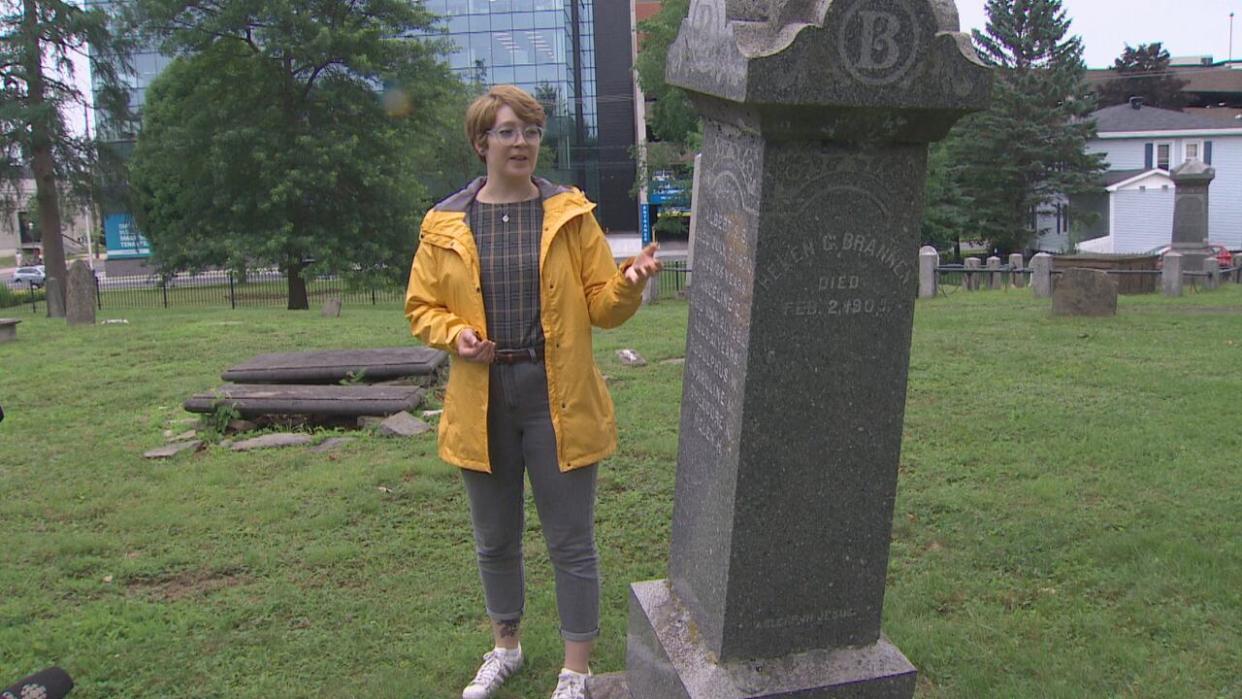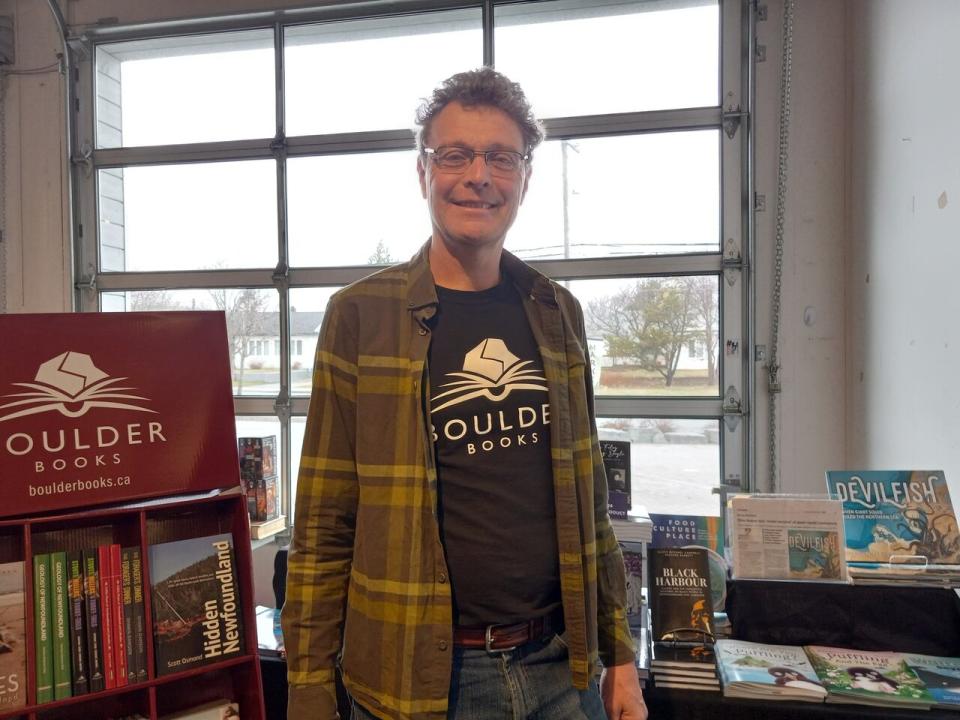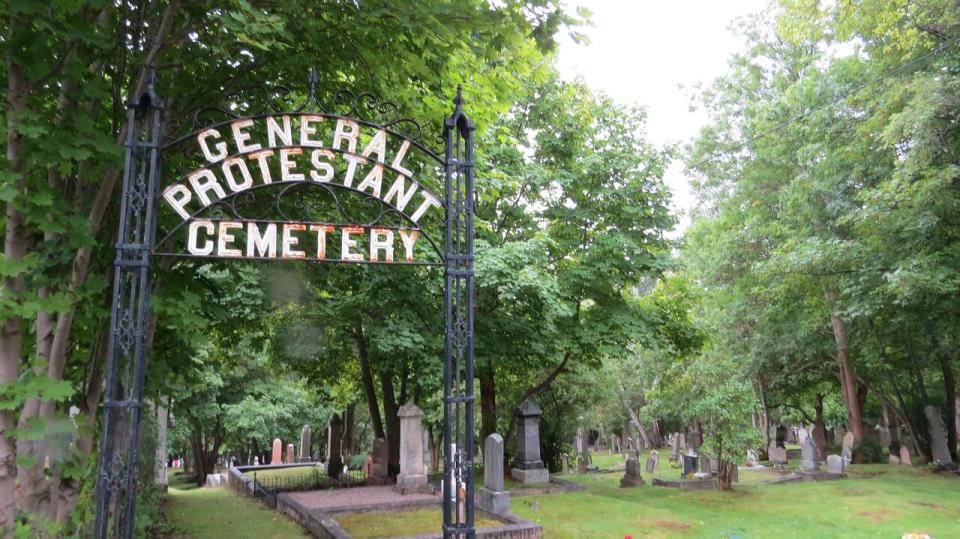This archaeologist wants people to get out and explore cemeteries with her upcoming book


Robyn Lacy recently signed a book deal with Boulder Books to write A Graveyard Guide to Eastern Newfoundland, set to be published in 2026. (Jon Collicott CBC)
An archaeologist who focuses on preserving cemeteries is putting together a guide book to get more people exploring these connections to the past.
Robyn Lacy, an archeologist specializing in historic burial grounds and Black Cat Cemetery Preservation co-director, is teaming up with Newfoundland-based publisher Boulder Books to release A Graveyard Guide to Eastern Newfoundland.
"Cemeteries are really good ways to learn more about a community," Lacy recently told CBC News.
She described how headstones document individual people, contain information about economics and religion, and act as pieces of sculpture.
LISTEN | CBC's Jamie Fitzpatrick drops by the General Protestant Cemetery in St. John's to chat with archaeologist Robyn Lacy about her upcoming book A Graveyard Guide to Eastern Newfoundland:
"You can find out a lot about where stone was coming from, which is connected to trade networks where the carvers were," Lacy said.
For instance, when it comes to the General Protestant Cemetery in St. John's, Lacy said a lot of the stone carvers were from the city. But in a community like Trinity, the limestone markers were imported from the British Isles.
Through her guide book she hopes to introduce readers to these cemeteries, among others in her upcoming book.
Signing a book deal
The graveyard guide book won't be Lacy's debut book. She has already published Burial and Death in Colonial North America: Exploring Interment Practices and Landscapes in 17th-Century British Settlements and her second book Daisy Wheel, Hexfoil, Hexafoil, Rosette: Protective Marks in Gravestone Art will be released later this year.
Lacy said she had meetings with Boulder Books president Gavin Will and they came on the idea of a cemetery guidebook.
"That could be a different way for people to explore the province, with some little history tidbits," said Lacy.
Will said the idea for a graveyard guide book intrigued him.
"It kind of fits in with Boulder's other work, where we're talking about heritage," said Will. "A lot of it is natural heritage with our guidebooks, but also cultural heritage."
There's a lot of public interest in the book already, he said, which doesn't surprise him as people are passionate about their ancestors.

Boulder Books president Gavin Will says he isn’t surprised by the public’s interest in Robyn Lacy’s upcoming book. (Elizabeth Whitten/CBC)
"People are very, very interested in where they come from and cemeteries are emblematic of that," Will said.
The book is scheduled to be released in 2026 and Will added they're looking for public input and for people to come forward with cemeteries that may not be on their radar yet.
Icons of the past
Archaeology is a vast subject but Lacy said she was drawn to studying cemeteries "because it's an interesting way to connect to the past."
"Taxes and death are the universal things in society. And being able to look at the last aspects of somebody's life and the funeral practices and different communities tell us a lot about how they were living as well."
As an undergraduate student Lacy said she was initially interested in maritime archaeology. It was while at a field school in Ireland with the University of Liverpool that had her recording historic cemeteries where her focus shifted.
"Sitting there in the Irish rain in July. It was like 2 degrees. Apparently that was the best thing ever," she laughed. "And I've sort of been on this completely different trajectory since then."
She hasn't done extensive background research on the General Protestant Cemetery yet but explained it was a non-denominational site ran through the Protestant church.
"We do have people from different walks of life here, which are really interesting to talk about too," said Lacy.

Robyn Lacy says one of her favourite sites is the General Protestant Cemetery in St. John's, which was designed to be park-like. (Elizabeth Whitten/CBC)
In the cemetery today, she said she can see a juxtaposition of older grave markers, made from materials like marble and sandstone, mixed with more modern ones made from granite.
Grave markers themselves can also tell people information about the time period through engraved imagery, she said. Classical symbols, like urns and willow trees, were popular in the 19th century.
"And we call it the softening of death," she said, like a figure of someone sleeping. "It's very peaceful. Whereas if you go back farther to the 18th and 17th centuries, you get the skulls and the cherub."
There would also be carvings of coffins and other symbols associated like hour glasses, to remind people that they were also going to die.
When Lacy started doing research, she realized there were far too many sites to include in just one book.
"There would be far too many sites, it would be like a tomb," she said, "I decided to cut it as if the province was a taco, just fold the island in half." As a result, this book will focus on cemeteries east of Grand Falls-Windsor.
If the book does well, a following book would explore the western half of the island and Labrador, Lacy said.
"One of my supervisors' kids said that every road in Newfoundland ends in a cemetery," said Lacy. "Unfortunately I'm not going to be able to fit every single site in the province in guidebooks."
Download our free CBC News app to sign up for push alerts for CBC Newfoundland and Labrador. Click here to visit our landing page.

